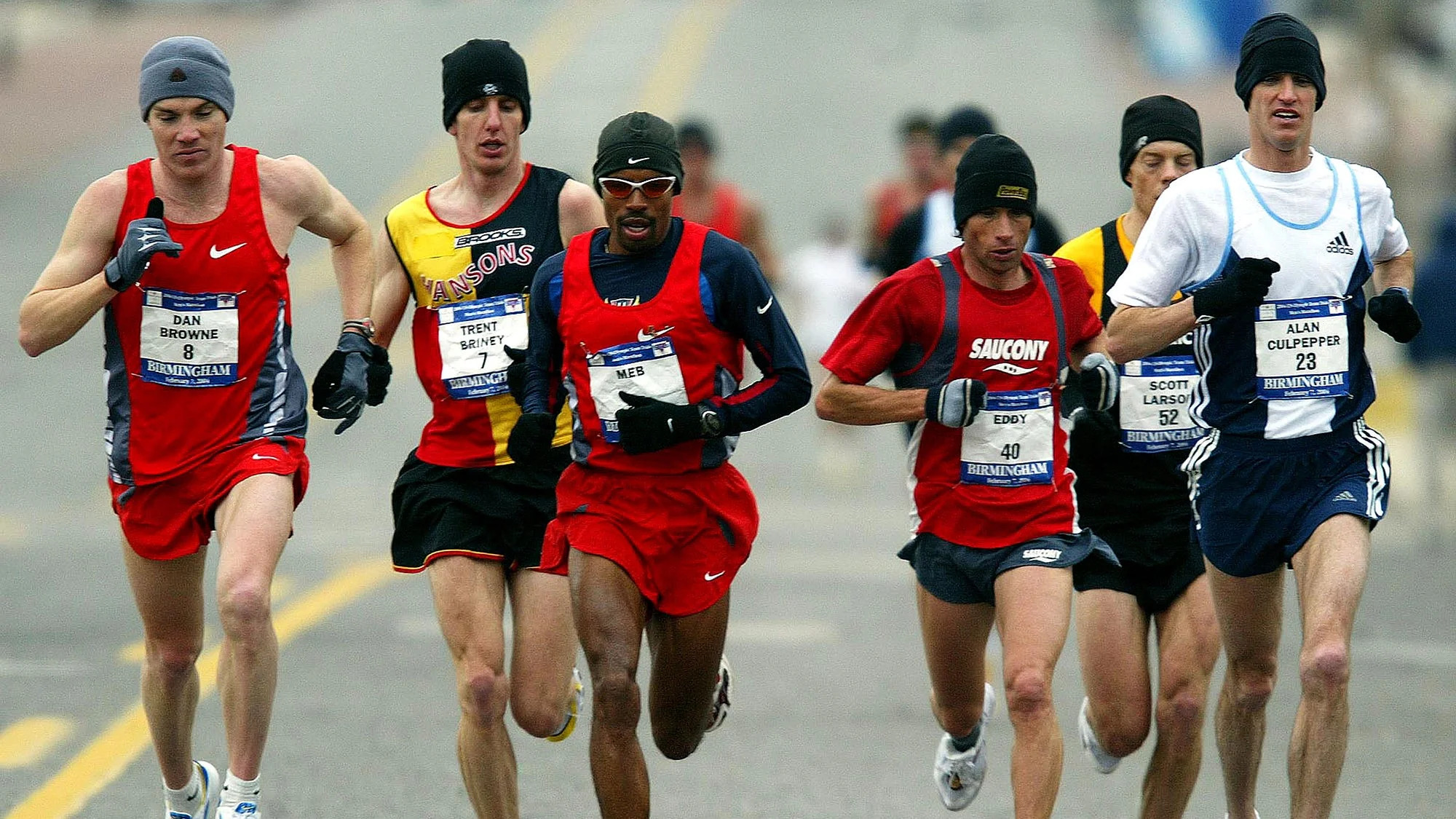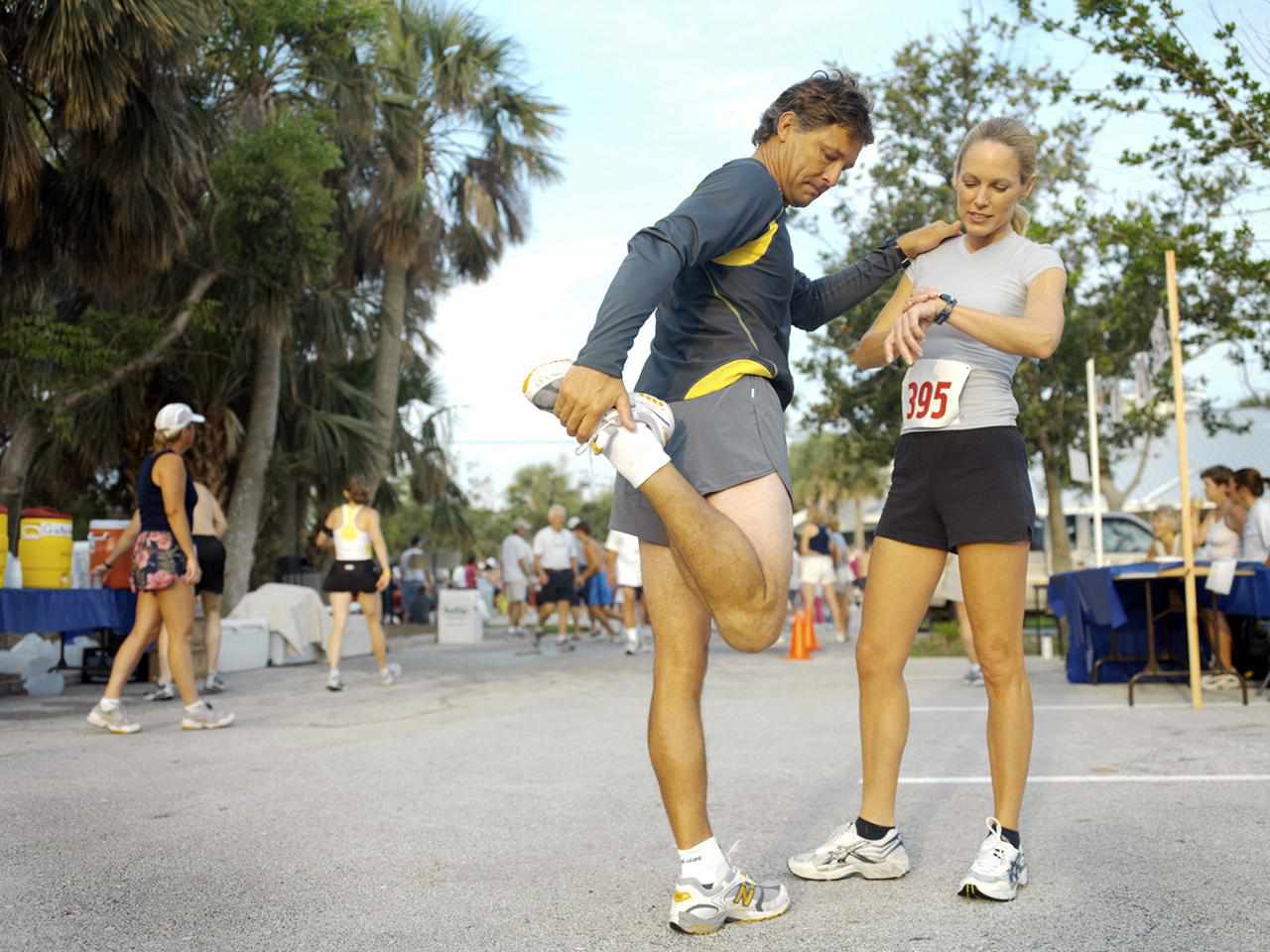

Featured
What Is Long Distance Running
Modified: August 22, 2023
Discover the benefits and challenges of long distance running in our featured article. Explore training techniques, gear recommendations, and expert advice to help you excel.
Introduction
Welcome to the world of long-distance running, where endurance and determination meet the open road.
Long distance running, also known as endurance running, refers to the sport in which individuals cover long distances typically ranging from 5 kilometers to full marathons, and even ultra-marathon distances exceeding 42.195 kilometers. It is a physically demanding sport that tests not only the body but also the mind.
Long distance running has gained immense popularity over the years, with millions of people lacing up their running shoes and hitting the pavement or trails in pursuit of health, personal challenges, and a sense of accomplishment. Whether you are a seasoned runner or just starting your journey, long distance running offers a wide array of benefits that can positively impact various aspects of your life.
In this article, we will explore the numerous benefits of long distance running, delve into training techniques, offer tips for success, discuss common injuries and how to prevent them, dive into the importance of nutrition for long distance runners, explore mental preparation strategies, and touch on the essential gear required to thrive in this endurance sport.
So, fasten your shoelaces, take a deep breath, and let’s embark on an exciting adventure into the world of long distance running.
Benefits of Long Distance Running
Long distance running offers a multitude of physical, mental, and emotional benefits. Let’s explore some of the key advantages:
- Improved Cardiovascular Health: Long distance running is a fantastic way to strengthen your heart and improve cardiovascular fitness. Regular running helps lower blood pressure, reduce the risk of heart disease, and increase overall heart strength.
- Weight Management: Running long distances burns a significant amount of calories, making it an effective tool for weight loss or weight maintenance. It boosts metabolism, enhances fat burning, and promotes a leaner physique.
- Mental Clarity and Stress Relief: As you push your body through the miles, running releases feel-good hormones called endorphins, which elevate mood and alleviate stress. It clears the mind, improves focus, and reduces symptoms of anxiety and depression.
- Increased Bone Density: Long distance running is a weight-bearing exercise that stimulates bone growth and helps prevent osteoporosis. The repetitive impact on the bones during running promotes stronger and denser skeletal structure.
- Enhanced Immune System: Regular endurance exercise like long distance running strengthens the immune system, making it more resilient to illnesses and infections. It also improves overall respiratory health.
- Boosted Self-Confidence: Accomplishing long distance running goals, such as completing a marathon or an ultramarathon, can boost self-confidence and self-esteem. It enables you to push past your limits and achieve milestones you once thought were impossible.
- Increased Stamina and Endurance: Long distance running gradually builds stamina and endurance, enabling you to run longer distances without getting fatigued. It trains your body to efficiently utilize oxygen and energy, improving your overall athletic performance.
These are just a few of the countless benefits that long distance running can provide. Whether you are looking to improve your physical fitness, manage stress, or challenge yourself both mentally and physically, long distance running offers a wealth of rewards for those willing to lace up their shoes and hit the road.
Training for Long Distance Running
Training for long distance running requires a systematic approach that gradually increases your endurance, builds strength, and minimizes the risk of injury. Here are some key tips to help you train effectively:
- Set Realistic Goals: Determine your running goals, whether it’s completing a 10K, half marathon, or a full marathon. Set realistic and achievable goals based on your current fitness level and gradually progress towards them.
- Follow a Training Plan: Utilize a structured training plan that includes a mix of distance runs, speed workouts, and rest days. It’s crucial to gradually increase your mileage and intensity to avoid overtraining and burnout.
- Build Base Mileage: Begin by developing your running endurance through shorter, easy-paced runs. Focus on increasing your weekly mileage gradually over time to build a strong base.
- Incorporate Speed Workouts: Integrate speed workouts into your training routine, such as interval training, tempo runs, and hill repeats. These workouts help improve your running speed and build stamina.
- Include Strength Training: Incorporate strength training exercises, such as squats, lunges, and core workouts, into your training routine. Strong muscles provide stability, reduce the risk of injury, and enhance overall running performance.
- Listen to Your Body: Pay attention to any signs of fatigue, pain, or overuse injuries. Rest and recovery are vital aspects of training. Allow your body adequate time to recover and avoid pushing through significant pain or fatigue.
- Stay Consistent: Consistency is key in long distance running. Aim to run regularly, sticking to your training schedule even on days when motivation may be low. Consistent training builds endurance and helps you progress towards your goals.
- Gradually Increase Long Runs: Gradually increase your long runs each week to build endurance. Aim to increase the distance by no more than 10% each week to avoid overexertion.
- Take Rest Days: Rest days are vital for recovery and injury prevention. Listen to your body and include at least one or two rest days in your weekly training schedule.
- Stay Hydrated and Fuel Properly: Hydration and nutrition play a crucial role in long distance running. Stay hydrated before, during, and after your runs and fuel your body with a balanced diet rich in carbohydrates, proteins, and healthy fats.
Remember, consistency, gradual progression, and listening to your body are essential elements of effective long distance running training. With dedication and perseverance, you can enhance your endurance, strength, and performance in this challenging yet rewarding sport.
Tips for Long Distance Running
Long distance running can be both physically and mentally demanding. Here are some tips to help you navigate the challenges and make the most of your long distance running journey:
- Invest in Proper Running Shoes: Choose a pair of running shoes that provide proper support, cushioning, and stability. Visit a specialty running store to get fitted for shoes that suit your running style and foot type.
- Warm-Up and Cool Down: Prior to your runs, perform a dynamic warm-up routine to prepare your muscles and joints. After your run, cool down with static stretches to aid in recovery and flexibility.
- Listen to Your Body: Pay attention to any signs of pain, discomfort, or fatigue during your runs. If something feels off, take a break, and consult a medical professional if necessary.
- Hydrate Properly: Stay hydrated throughout your runs by drinking water or sports drinks. Carry a water bottle or plan your route near water fountains to replenish fluids as needed.
- Use Proper Running Form: Maintain good posture, relaxed shoulders, and a slight forward lean while running. Land on the middle of your foot, allowing your heel to lightly touch the ground.
- Join a Running Group or Find a Running Buddy: Running with others can provide motivation, support, and accountability. Consider joining a local running group or finding a running buddy to keep you motivated and make your runs more enjoyable.
- Practice Mental Strategies: Long distance running can be mentally challenging. Develop mental strategies such as visualization, positive self-talk, and breaking the race into smaller milestones to stay focused and motivated.
- Embrace Rest and Recovery: Rest and recovery are crucial for long distance runners. Allow your body ample time to rest and recover between runs to prevent overuse injuries. Incorporate rest days, active recovery, and proper sleep into your training routine.
- Gradually Increase Mileage: Increase your mileage gradually to avoid overexertion and minimize the risk of injury. Follow a structured training plan that gradually progresses in distance and intensity.
- Take Care of Your Feet: Keep your feet in good condition by wearing moisture-wicking socks, trimming your toenails, and using proper blister prevention techniques. Address any foot pain or discomfort promptly.
By implementing these tips into your long distance running routine, you can optimize your performance, reduce the risk of injuries, and enjoy the journey towards achieving your running goals.
Common Injuries in Long Distance Running
Long distance running can put stress on your muscles, joints, and connective tissues, increasing the risk of certain injuries. Being aware of these common running injuries can help you take preventive measures and seek early treatment if needed. Here are some of the common injuries in long distance running:
- Runner’s Knee (Patellofemoral Pain Syndrome): This is a common overuse injury that causes pain around the kneecap. It can be caused by factors such as muscle imbalances, inadequate footwear, or improper running form.
- Shin Splints: Shin splints are characterized by pain and inflammation along the inside of the shinbone (tibia). It can be caused by overloading the muscles and tendons in the lower leg, often due to sudden increases in training intensity or improper running techniques.
- Achilles Tendonitis: Achilles tendonitis is the inflammation and degeneration of the Achilles tendon, which connects the calf muscles to the heel bone. It can result from repetitive stress and overuse, often due to sudden increases in training volume or improper footwear.
- Plantar Fasciitis: Plantar fasciitis is the inflammation and irritation of the plantar fascia, a thick band of tissue that runs along the bottom of the foot. It is commonly caused by overuse, tight calf muscles, improper foot mechanics, or inadequate arch support.
- Iliotibial Band (ITB) Syndrome: ITB syndrome is characterized by pain and inflammation on the outside of the knee. It occurs when the iliotibial band, a thick band of tissue that runs from the hip to the shin, becomes excessively tight or irritated due to repetitive friction.
- Stress Fractures: Stress fractures are small cracks in the bone, typically caused by repetitive stress and overload. They commonly occur in weight-bearing bones, such as the tibia or metatarsals, and can result from overtraining, improper footwear, or running on hard surfaces.
- Blisters: Blisters are a common friction-related injury that can occur on the feet, often as a result of ill-fitting shoes or excessive moisture. They can range from mild discomfort to painful sores, and proper footwear and blister prevention techniques are essential in their management.
If you experience any signs of injury, such as persistent pain, swelling, or difficulty in movement, it’s important to seek medical attention or consult a sports physician. Rest, proper rehabilitation, and addressing the underlying causes of the injury are crucial in the recovery process.
Remember, prevention is key. Gradually increasing your mileage, cross-training, incorporating strength and flexibility exercises, wearing appropriate footwear, and listening to your body can help minimize the risk of injury and allow you to enjoy long distance running for years to come.
Nutrition for Long Distance Runners
Nutrition plays a critical role in long distance running, as it provides the fuel necessary for optimal performance, promotes recovery, and supports overall health. Here are some key nutrition tips for long distance runners:
- Stay Hydrated: Proper hydration is essential during long distance runs. Drink water before, during, and after your runs to maintain adequate fluid balance. Consider using sports drinks to replenish electrolytes lost through sweat.
- Carbohydrate-Rich Diet: Carbohydrates are the primary energy source for endurance activities. Aim to consume a diet rich in complex carbohydrates such as whole grains, fruits, vegetables, and legumes. These provide sustained energy for long runs.
- Protein for Recovery: Adequate protein intake is crucial for muscle repair and recovery. Include lean sources of protein such as chicken, fish, lean meats, eggs, dairy, tofu, and legumes in your diet to support muscle development and repair.
- Healthy Fats: Don’t neglect healthy fats, which provide essential fatty acids and aid in nutrient absorption. Incorporate sources of monounsaturated and polyunsaturated fats such as avocados, nuts, seeds, olive oil, and fatty fish into your diet.
- Timing of Meals: Plan your meals and snacks strategically to fuel your runs. Consuming a balanced meal containing carbohydrates, protein, and a small amount of healthy fats a few hours before a long run can provide sustained energy. For shorter runs, opt for lighter snacks.
- Pre-Run Fuel: Before a long run, consume easily digestible carbohydrates such as bananas, oatmeal, or energy gels to provide quick energy. Experiment with different foods to find what works best for you without causing digestive discomfort.
- During-Run Nutrition: For runs lasting longer than an hour, consider incorporating fueling strategies such as energy gels, sports drinks, or energy chews to maintain energy levels and replenish electrolytes.
- Post-Run Recovery: Consume a combination of carbohydrates and protein within 30-60 minutes after your run to aid in muscle recovery. Include foods like a protein smoothie, yogurt with fruit, or a balanced meal containing lean protein and carbohydrates.
- Vitamins and Minerals: Ensure you’re getting essential vitamins and minerals through a well-balanced diet. Consider incorporating a variety of colorful fruits and vegetables to maximize your intake of antioxidants and micronutrients.
- Individualized Approach: Every runner has unique nutritional needs. Experiment with different foods, fluids, and timing strategies during training to determine what works best for you. Consider working with a registered dietitian who specializes in sports nutrition to tailor your nutrition plan.
Proper nutrition is a vital component of long distance running. By fueling your body with the right nutrients, you can maximize your performance, aid in recovery, and support your long-term running goals.
Mental Preparation for Long Distance Running
Long distance running is not just a physical challenge, but also a mental one. Mental preparation is essential for success in this endurance sport. Here are some strategies to help you develop mental toughness and prepare for long distance running:
- Visualize Success: Use visualization techniques to imagine yourself completing your long distance runs successfully. See yourself crossing the finish line with a sense of accomplishment and visualize the challenges you may face along the way, envisioning yourself overcoming them.
- Set SMART Goals: Set specific, measurable, achievable, relevant, and time-bound (SMART) goals for your long distance running. Break down your goals into smaller milestones to track your progress and celebrate your achievements along the way.
- Practice Positive Self-Talk: Replace negative thoughts with positive affirmations and self-talk. Remind yourself of your capabilities, focus on your strengths, and maintain a positive mindset. Use encouraging phrases like “I can do this” or “I am strong and resilient.”
- Embrace Discomfort: Long distance running can be physically and mentally uncomfortable. Embrace and accept the discomfort as a normal part of the process. By pushing past your comfort zone, you’ll build mental resilience and become better equipped to handle challenges.
- Break It Down: Focus on small, manageable chunks of the run rather than overwhelming yourself with the entire distance. Set mini-goals along the way, such as reaching a certain landmark or completing a specific time interval, to make the run feel more achievable.
- Practice Mindfulness: Incorporate mindfulness practices, such as deep breathing exercises, meditation, or focusing on the present moment during your runs. Being fully present helps you stay focused, reduce anxiety, and maintain a positive mindset.
- Cultivate Mental Strength: Endurance training is not just physical but also mental training. Pushing through challenging moments in your training builds mental resilience and toughness. Embrace the discomfort, persevere in difficult situations, and learn from setbacks.
- Find Support and Accountability: Surround yourself with a supportive network of fellow runners, friends, or a running community. Share your running journey, seek advice when needed, and find accountability partners who will help you stay motivated during training.
- Develop a Pre-Race Ritual: Establish a pre-race ritual or routine that helps you mentally prepare for the challenge ahead. This might include stretching, listening to energizing music, or engaging in calming activities that help you focus and get in the right mindset.
- Enjoy the Journey: Remember to enjoy the process of long distance running. Embrace the highs and lows, celebrate small victories, and appreciate the unique experiences and personal growth that come with the sport.
Mental preparation is just as important as physical training in long distance running. By incorporating these strategies into your routine, you can cultivate mental toughness, overcome obstacles, and unleash your full potential on your long distance running journey.
Long Distance Running Gear
Having the right gear is essential for long distance running, as it can enhance your comfort, performance, and overall enjoyment of the sport. Here are some key pieces of gear to consider for your long distance runs:
- Running Shoes: Invest in a good pair of running shoes that provide proper support, cushioning, and stability. Look for shoes designed specifically for long distance running, taking into account your foot type, pronation, and running style.
- Moisture-Wicking Apparel: Wear moisture-wicking and breathable apparel to help keep you cool and dry during your runs. Choose lightweight and quick-drying materials that help regulate body temperature and minimize chafing.
- Compression Gear: Consider wearing compression socks, sleeves, or tights to enhance blood circulation, reduce muscle fatigue, and aid in recovery. Compression gear can also provide extra support to muscles and improve performance.
- GPS Watch: A GPS watch can track your time, distance, pace, and provide helpful insights into your running performance. It can help you stay on track during training and monitor your progress towards your running goals.
- Hydration System: For longer runs, carry a hydration system that suits your preferences, such as a handheld water bottle, hydration belt, or hydration pack. Staying hydrated during your runs is crucial for maintaining performance and preventing dehydration.
- Running Belt or Waist Pack: Consider using a running belt or waist pack to carry essentials such as nutrition gels, keys, phone, or other personal items. Make sure it is lightweight, adjustable, and comfortable to wear.
- Reflective Gear: If you run in low-light conditions, wear reflective gear, such as reflective vests, armbands, or jackets, to enhance visibility and improve safety, especially when running near roads or in areas with limited lighting.
- Sunglasses and Hat: Protect your eyes from the sun’s glare and shield your face from harmful UV rays by wearing sunglasses and a hat. Choose sunglasses with UV protection and a hat that provides shade and ventilation.
- Body Glide or Anti-Chafing Balm: Apply body glide or anti-chafing balm to areas prone to friction and chafing, such as underarms, thighs, and feet, to prevent discomfort and blisters during long runs.
- High-Quality Socks: Invest in high-quality, moisture-wicking running socks that provide cushioning and reduce friction. Choose socks that fit well and are appropriate for the conditions you’ll be running in.
Remember that everyone’s preferences and needs may vary, so it’s important to find gear that works best for you. Experiment with different options during your training runs to ensure you feel comfortable, confident, and well-equipped for your long distance running adventures.
Conclusion
Congratulations on completing this comprehensive guide to long distance running! We have explored the various benefits of long distance running, training techniques, tips for success, common injuries, nutrition strategies, mental preparation, and essential gear.
Long distance running is a challenging yet rewarding journey that can transform your physical fitness, mental resilience, and overall well-being. It offers a multitude of benefits, including improved cardiovascular health, weight management, stress relief, increased stamina, and boosted self-confidence.
To excel in long distance running, it is important to follow a structured training plan, gradually increase your mileage, incorporate strength training, and listen to your body’s needs. Proper nutrition and hydration will fuel your runs and support recovery, while mental preparation will empower you to overcome obstacles and stay focused.
Investing in the right gear, such as running shoes, moisture-wicking apparel, and hydration systems, will optimize your comfort and performance during long runs. With dedication, practice, and perseverance, you can conquer long distance running goals and achieve milestones you once thought were impossible.
Remember, long distance running is not just a physical activity; it is a journey that builds character, resilience, and self-confidence. Enjoy every step of the way, push your limits, and celebrate your accomplishments, both big and small.
So, lace up your shoes, hit the road or trail, and embark on your long distance running adventure. Embrace the challenge, embrace the joy, and embrace the benefits that this incredible sport has to offer. Happy running!









